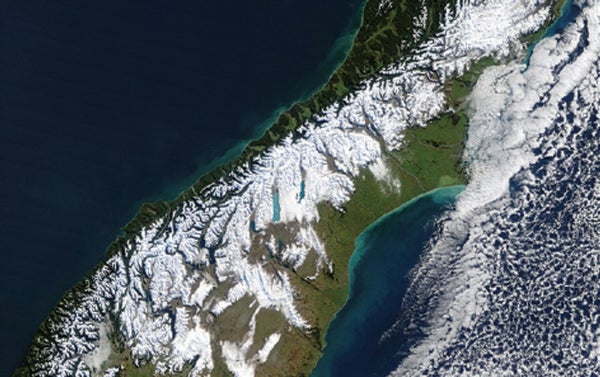To feel the earth move under your feet, visit New Zealand. Every year the sides of the island nation's Alpine Fault shift past one another about 30 millimeters—a blistering speed for strike-slip faults, which typically slip at rates closer to one or two millimeters a year. “What is particularly interesting about the Alpine Fault is that it has maintained this high slip rate for almost its entire history,” says Simon Lamb, a geologist at the Victoria University of Wellington. “As far as I can tell, no other one land fault comes close in this respect.” In fact, the Alpine Fault has shifted approximately 700 kilometers over the past 25 million years—250 kilometers more than previously estimated, according to Lamb's new study in Geochemistry, Geophysics, Geosystems. That movement has seismic consequences: New Zealand has a 30 percent chance for an earthquake of magnitude eight or higher in the next 50 years.
FAULT NAME | LOCATION | LENGTH (km) | SLIP RATE (mm/yr) |
|---|---|---|---|
Alpine | South Island, New Zealand | 700 | 30 |
San Andreas | California | 1,100 | 25 |
North Anatolian | Turkey | 1,100 | 20 |
Denali | British Columbis to Central Alaska | 2,000 | 10 |
Altyn Tagh | Tibet | 1,500 | 9 |
On supporting science journalism
If you're enjoying this article, consider supporting our award-winning journalism by subscribing. By purchasing a subscription you are helping to ensure the future of impactful stories about the discoveries and ideas shaping our world today.
Top 5 Fastest-Moving Strike-Slip Faults
